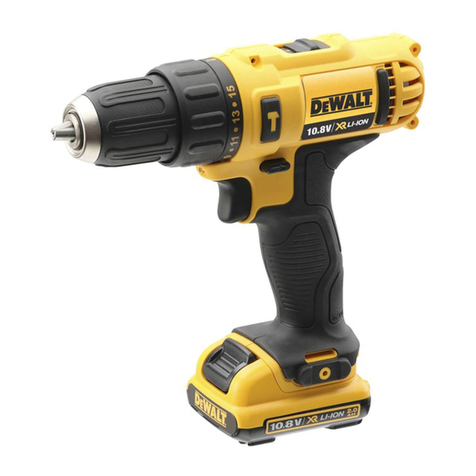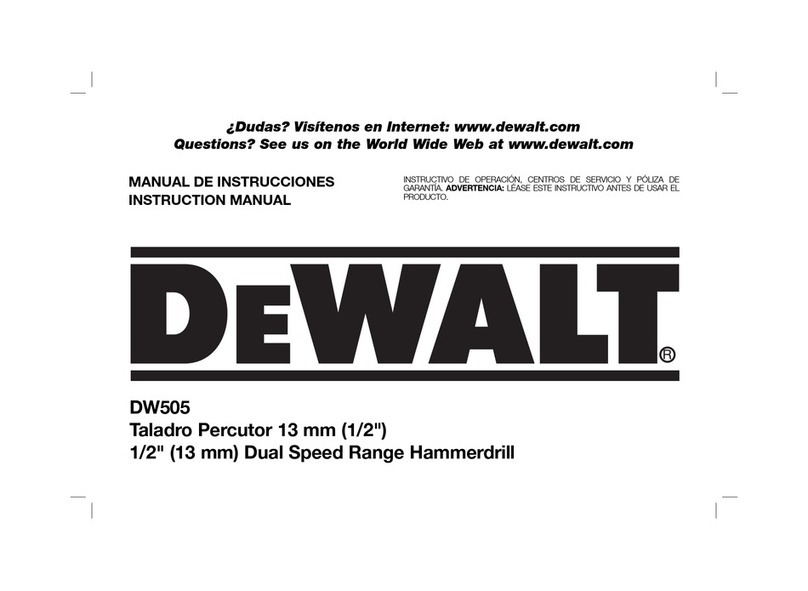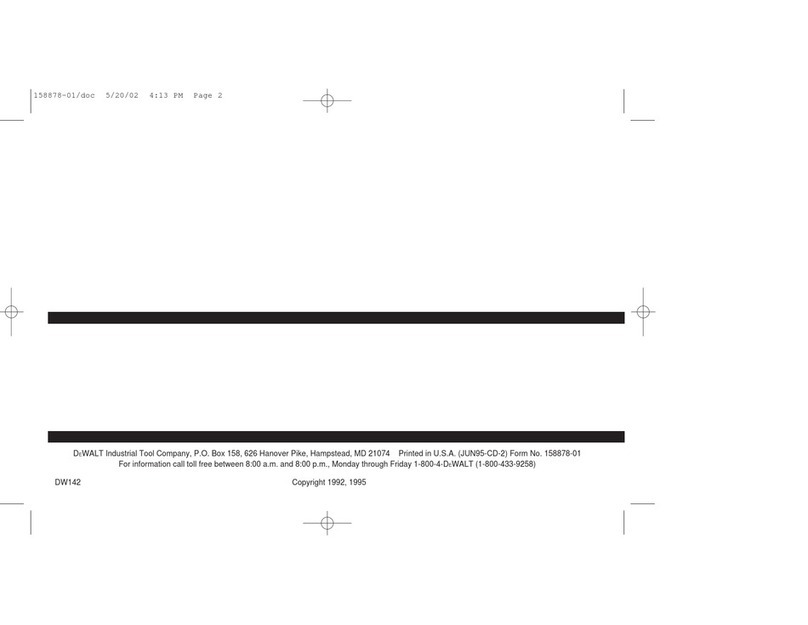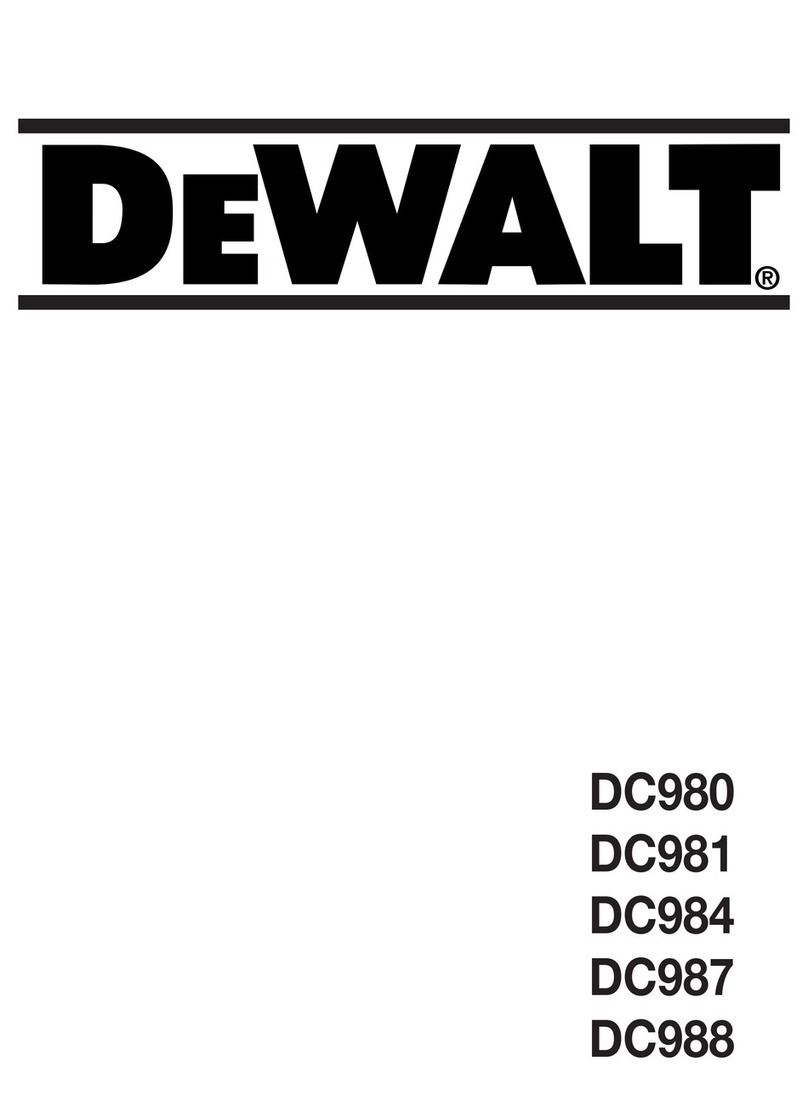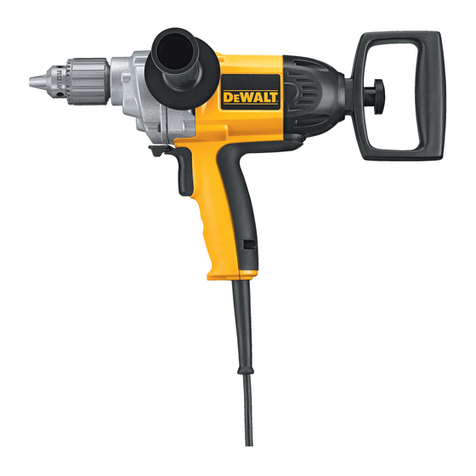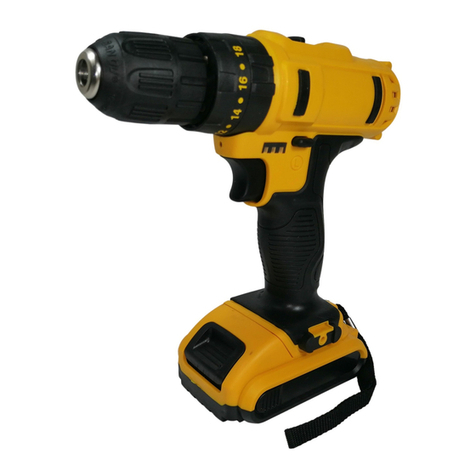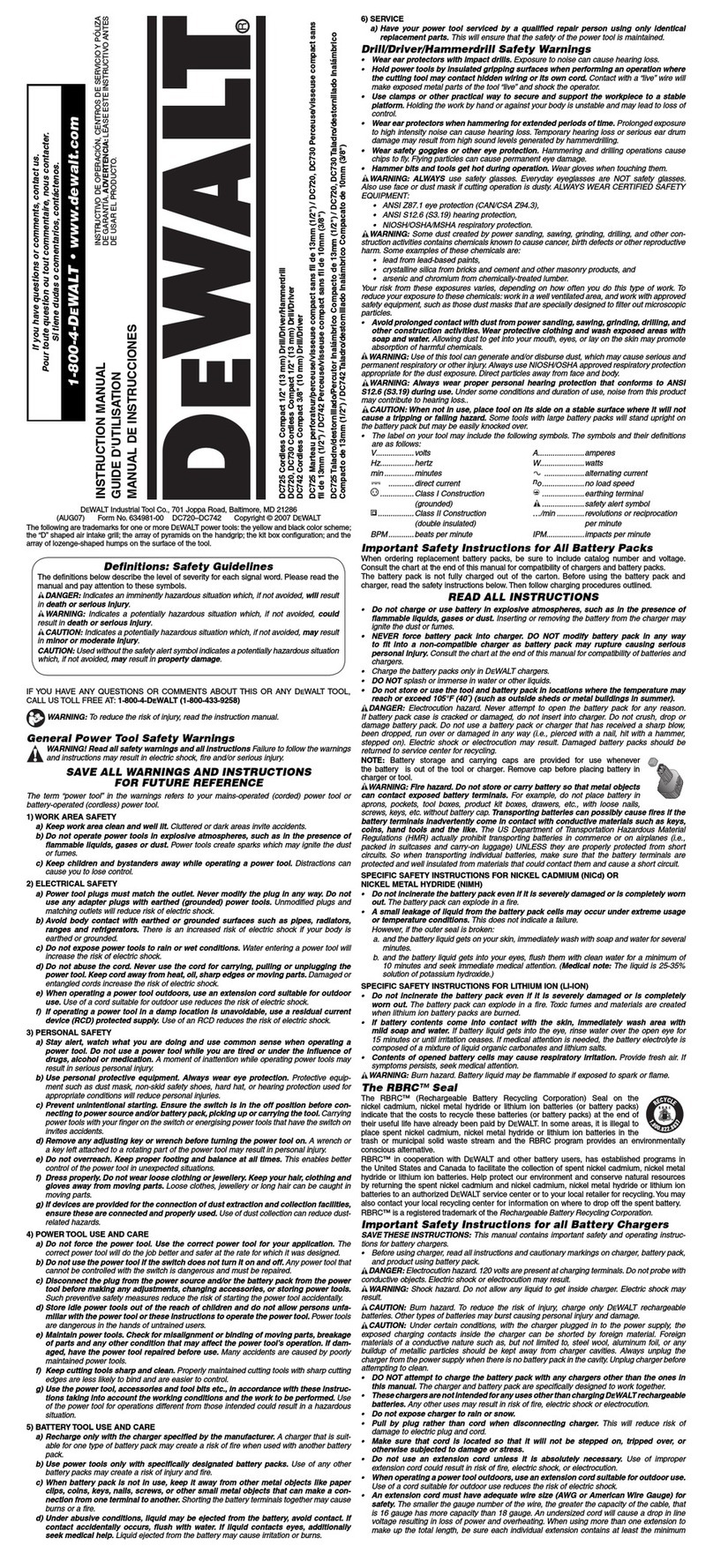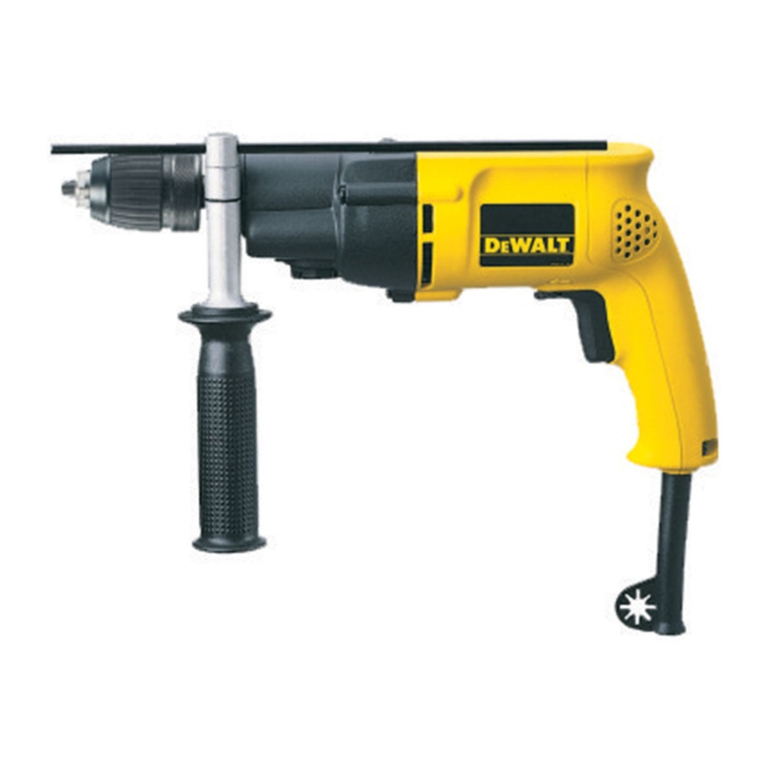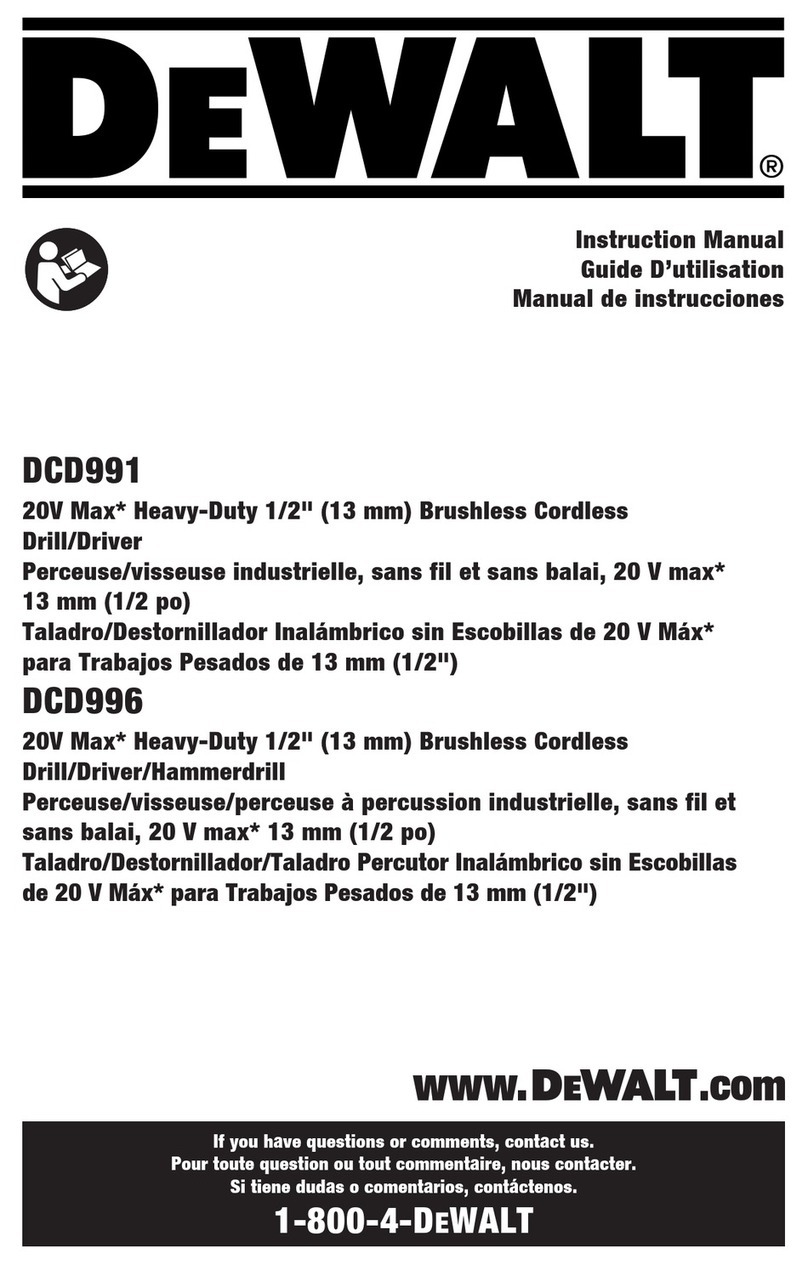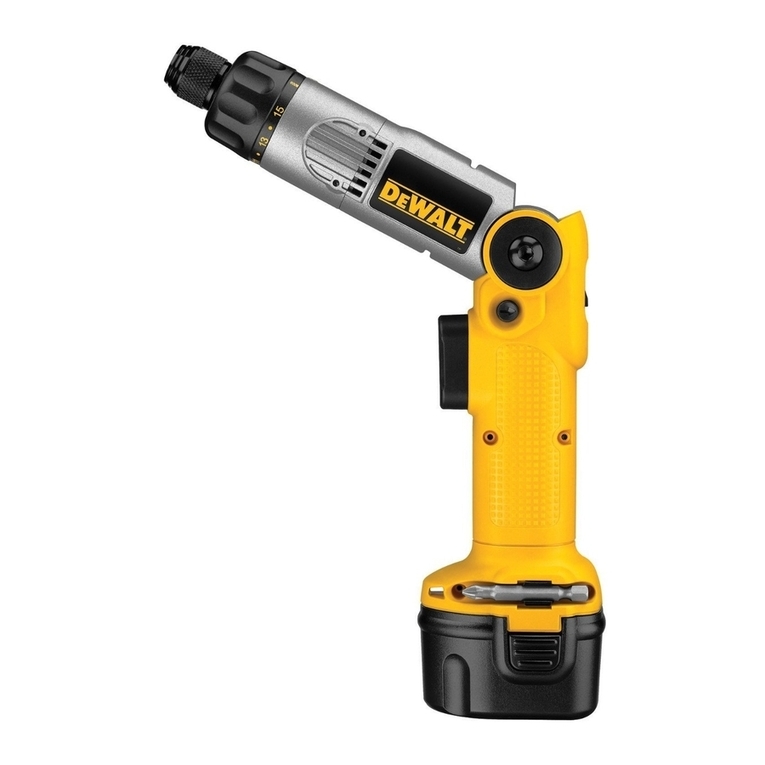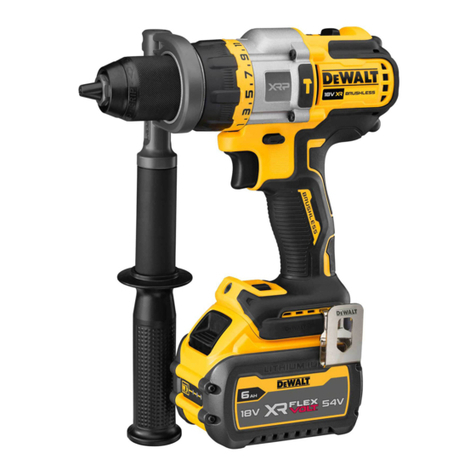
5
ENGLISH
Additional Safety Information
WARNING: Never modify the power tool or any part of it.
Damage or personal injury couldresult.
WARNING: ALWAYS use safety glasses. Everyday
eyeglasses are NOT safety glasses. Also use face or dust
mask if cutting operation is dusty. ALWAYS WEAR CERTIFIED
SAFETYEQUIPMENT:
• ANSI Z87.1 eye protection (CAN/CSA Z94.3),
• ANSI S12.6 (S3.19) hearing protection,
• NIOSH/OSHA/MSHA respiratoryprotection.
WARNING: Some dust created by power sanding, sawing,
grinding, drilling, and other construction activities contains
chemicals known to the State of California to cause cancer,
birth defects or other reproductive harm. Some examples of
these chemicalsare:
• lead from lead‑based paints,
• crystalline silica from bricks and cement and other masonry
products, and
• arsenic and chromium from chemically‑treatedlumber.
Your risk from these exposures varies, depending on how
often you do this type of work. To reduce your exposure to
these chemicals: work in a well ventilated area, and work with
approved safety equipment, such as those dust masks that are
specially designed to filter out microscopicparticles.
• Wear protective clothing and wash exposed areas
with soap and water. Allowing dust to get into your
mouth, eyes, or lay on the skin may promote absorption of
harmfulchemicals. Direct particles away from face andbody.
• Use the appropriate dust extractor vacuum to remove
the vast majority of static and airborne dust. Failure
to remove static and airborne dust could contaminate the
working environment or pose an increased health risk to the
operator and those in closeproximity.
• Use clamps or other practical ways to secure and
support the workpiece to a stable platform. Holding the
work by hand or against your body is unstable and may lead
to loss ofcontrol andinjury.
• Air vents often cover moving parts and should be
avoided. Loose clothes, jewelry or long hair can be caught in
movingparts.
CAUTION: When not in use, place tool on its side
on a stable surface where it will not cause a tripping
or falling hazard. Some tools with large battery packs
Additional Safety Warnings for Drills
• Do not operate this tool for long periods of time.
Vibration caused by the operating action of this tool may
cause permanent injury to fingers, hands, and arms. Use
gloves to provide extra cushion, take frequent rest periods, and
limit daily time ofuse.
• Hammer bits and tools get hot during operation. Wear
gloves when touchingthem.
DRILL/DRIVER/HAMMERDRILL SAFETYWARNINGS
1) Safety Instructions for All Operations
a ) Wear ear protectors when impact drilling. Exposure to
noise can cause hearing loss.
b) Use the auxiliary handle(s). Loss of control can cause
personal injury.
c ) Brace the tool properly before use. This tool produces
a high output torque and without properly bracing the
tool during operation, loss of control may occur resulting in
personalinjury.
d ) Hold the power tool by insulated gripping surfaces,
when performing an operation where the cutting
accessory or fasteners may contact hidden wiring.
Cutting accessory contacting a “live” wire may make exposed
metal parts of the power tool “live” and could give the
operator an electricshock.
2) Safety Instructions When Using Long
DrillBits
a ) Never operate at higher speed than the maximum
speed rating of the drill bit. At higher speeds, the bit is likely
surfaces do not allow for safe handling and control of the tool
in unexpectedsituations.
5) Battery Tool Use and Care
a ) Recharge only with the charger specified by the
manufacturer. A charger that is suitable for one type of
battery pack may create a risk of fire when used with another
batterypack.
b ) Use power tools only with specifically designated
battery packs. Use of any other battery packs may create a
risk of injury andfire.
c ) When battery pack is not in use, keep it away from
other metal objects, like paper clips, coins, keys, nails,
screws or other small metal objects, that can make a
connection from one terminal to another. Shorting the
battery terminals together may cause burns or afire.
d ) Under abusive conditions, liquid may be ejected
from the battery; avoid contact. If contact accidentally
occurs, flush with water. If liquid contacts eyes,
additionally seek medical help. Liquid ejected from the
battery may cause irritation orburns.
e ) Do not use a battery pack or tool that is damaged
or modified. Damaged or modified batteries may exhibit
unpredictable behavior resulting in fire, explosion or risk
ofinjury.
f ) Do not expose a battery pack or tool to fire or
excessive temperature. Exposure to fire or temperature
above 265°F (130°C) may causeexplosion.
g ) Follow all charging instructions and do not charge
the battery pack or tool outside the temperature range
specified in the instructions. Charging improperly or at
temperatures outside the specified range may damage the
battery and increase the risk of fire.
6) Service
a ) Have your power tool serviced by a qualified repair
person using only identical replacement parts. This will
ensure that the safety of the power tool ismaintained.
b ) Never service damaged battery packs. Service of
battery packs should only be performed by the manufacturer
or authorized serviceproviders.
to bend if allowed to rotate freely without contacting the
workpiece, resulting in personalinjury.
b ) Always start drilling at low speed and with the bit tip
in contact with the workpiece. At higher speeds, the bit is
likely to bend if allowed to rotate freely without contacting the
workpiece, resulting in personalinjury.
c ) Apply pressure only in direct line with the bit and
do not apply excessive pressure. Bits can bend causing
breakage or loss of control, resulting in personalinjury.




